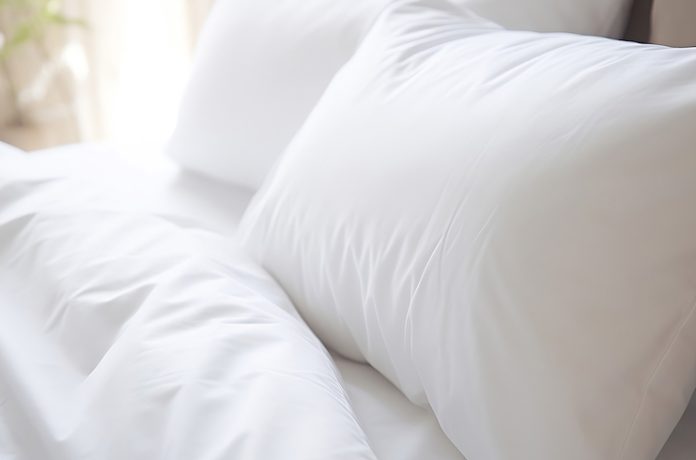
While research sponsored by the National Institutes of Health has determined that feather allergy is very rare, many individuals suffer from adverse health effects from products that incorporate feather materials. According to the Mayo Clinic, feather duvet lung or hypersensitivity pneumonitis is a lung problem caused by sensitivity to antigen from feathers in duvets and pillows filled with duck or goose feathers. Breathing in this dust can trigger lung inflammation and difficulty breathing. Resultantly, hotels have seen a rapid increase in reservations requesting guestrooms without pillows, duvets, or mattresses containing feathers. To accommodate these requests, it is essential that hotels set aside a percentage of their room inventory as “feather free.”
How much inventory?
When determining how much inventory should be designated as feather free, there are several factors to consider. Start with the history of requests for feather-free rooms. Be sure to examine the room type, bed configuration, and other special features of these requests. More significantly, ascertain the frequency of such requests and how far in advance of the day of arrival these requests are typically submitted. If you find that your hotel has struggled to meet these special requests, more inventory should be converted to feather-free status. Ultimately, having too many feather-free guestrooms is not really an impediment, as most guests would be more than willing to stay in a guestroom without feather pillows or feather duvets.
Other allergy-sensitive requests
Also consider other types of allergy-sensitive requests such as fragrance free or scent free, hypoallergenic, pet free, and allergy-friendly guestrooms as part of your hotel’s inventory mix. For allergy-friendly rooms, special measures are taken to reduce airborne particulates (dust, pollen, spores, pet dander), bio-aerosols (bacteria, mold, viruses), and volatile organic compounds (chemical or odor-causing gases). Typical tactics include replacing carpeting with hardwood flooring, swapping heavy draperies with easy-to-clean blinds or window sheers, installing state-of-the-art HEPA air purifiers, incorporating guestroom furniture comprised of more solid and less absorbent surfaces and upholstery that can harbor allergens, using mattress and pillow encasements that will stop allergens and dust mites, and sanitizing with organic, allergen-free cleansers. Finally, to support the time and effort needed to meet these guest expectations, many hotels choose to market these allergy-friendly guestrooms at a modest premium.











